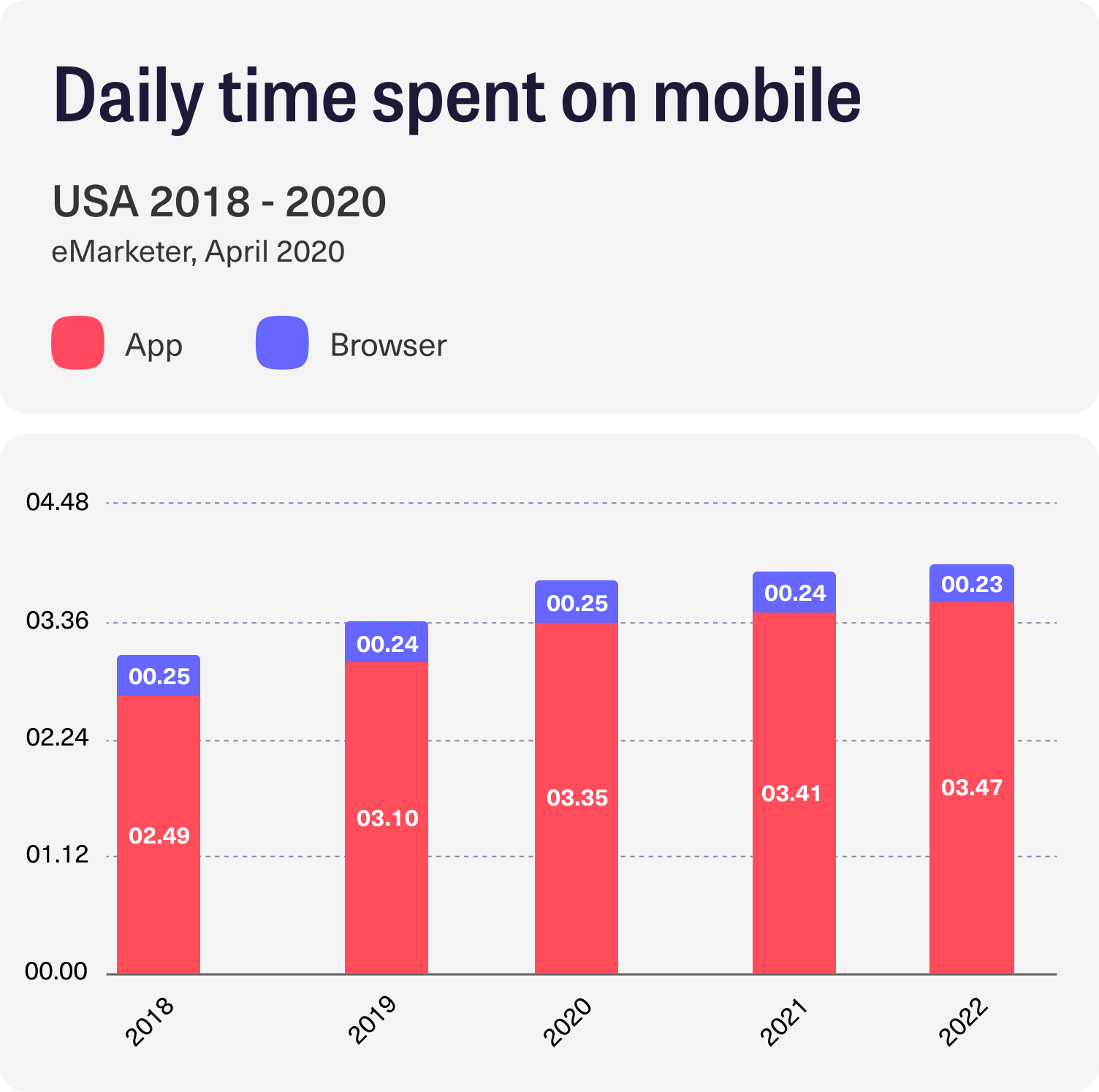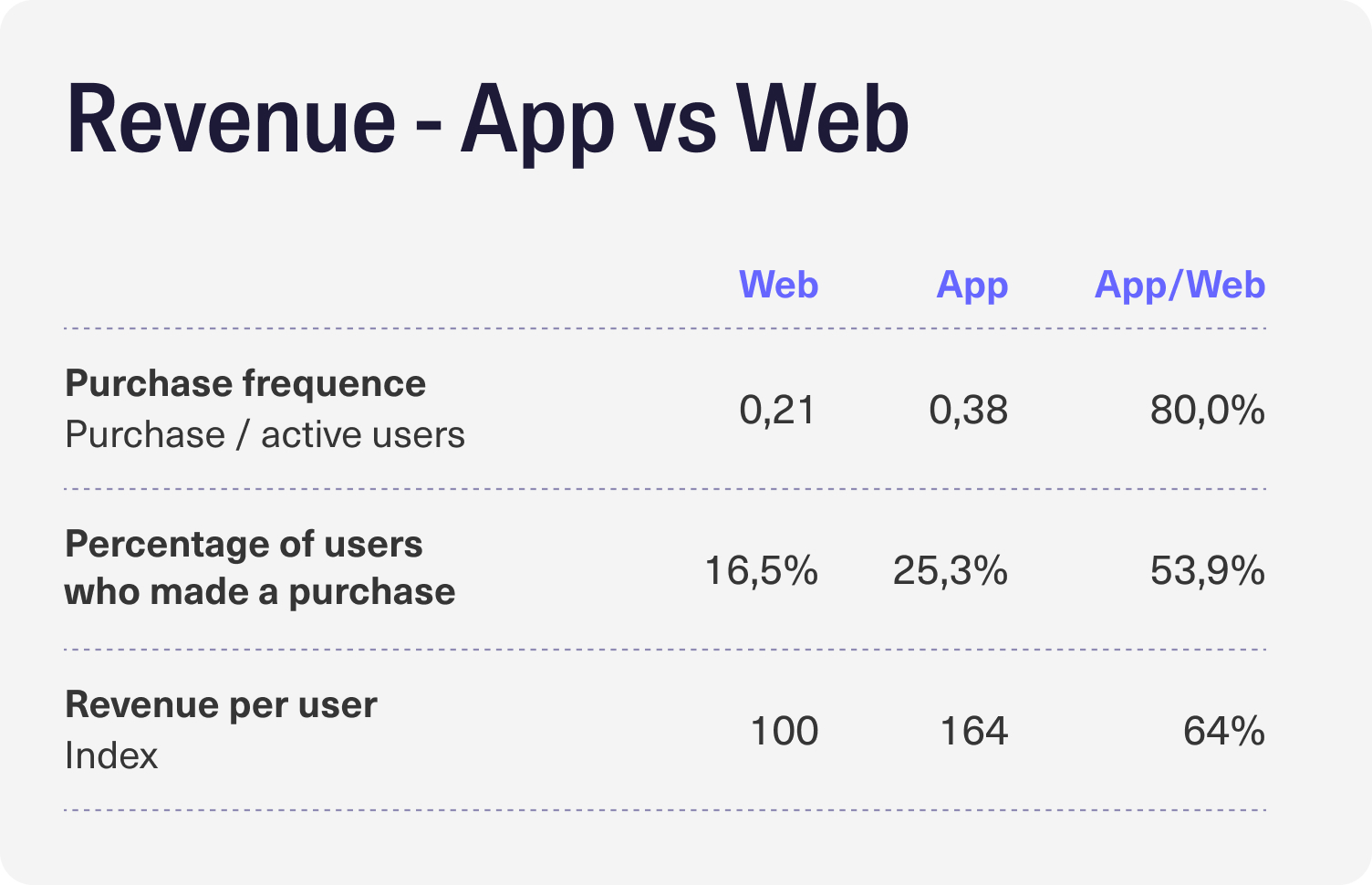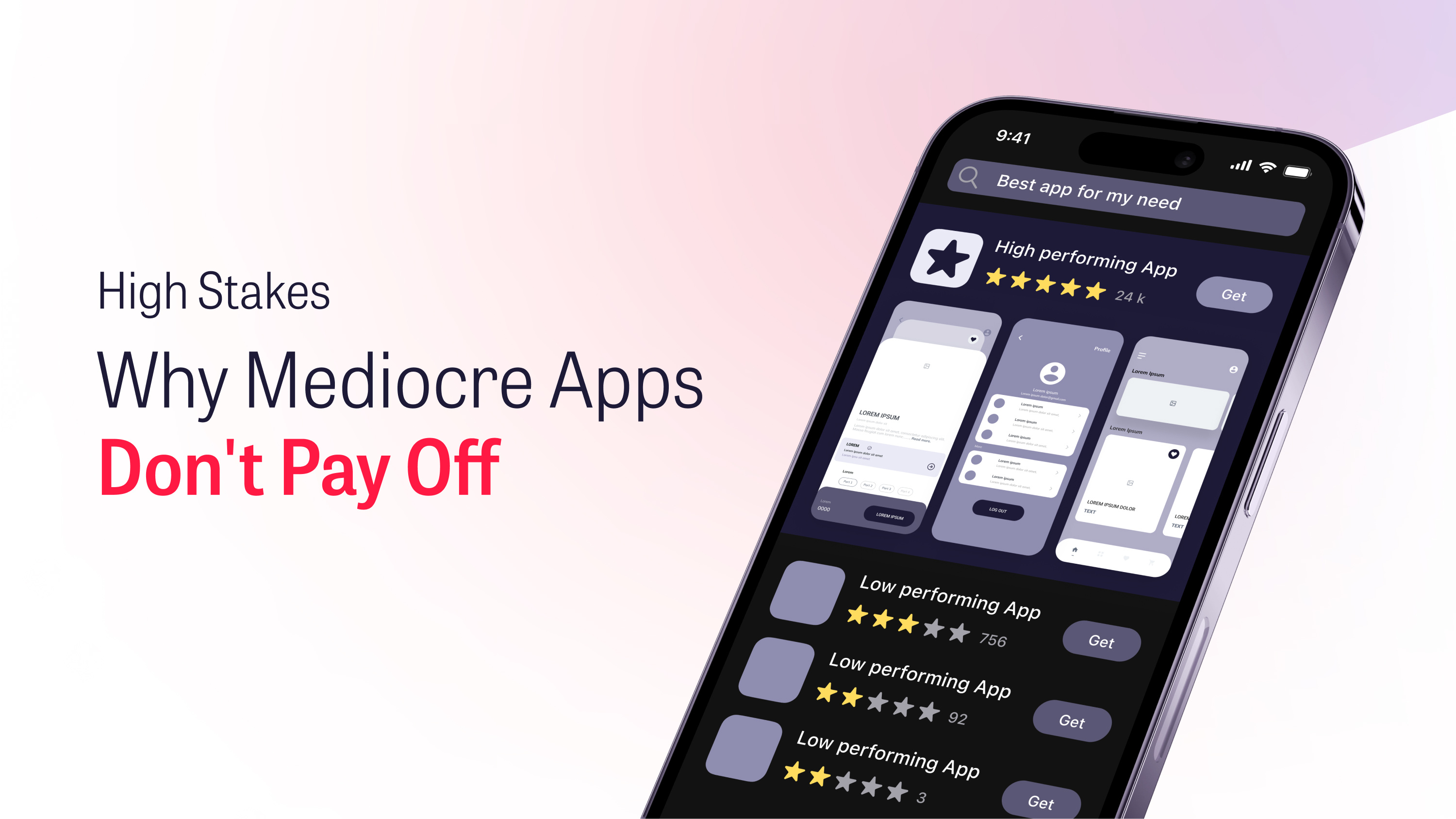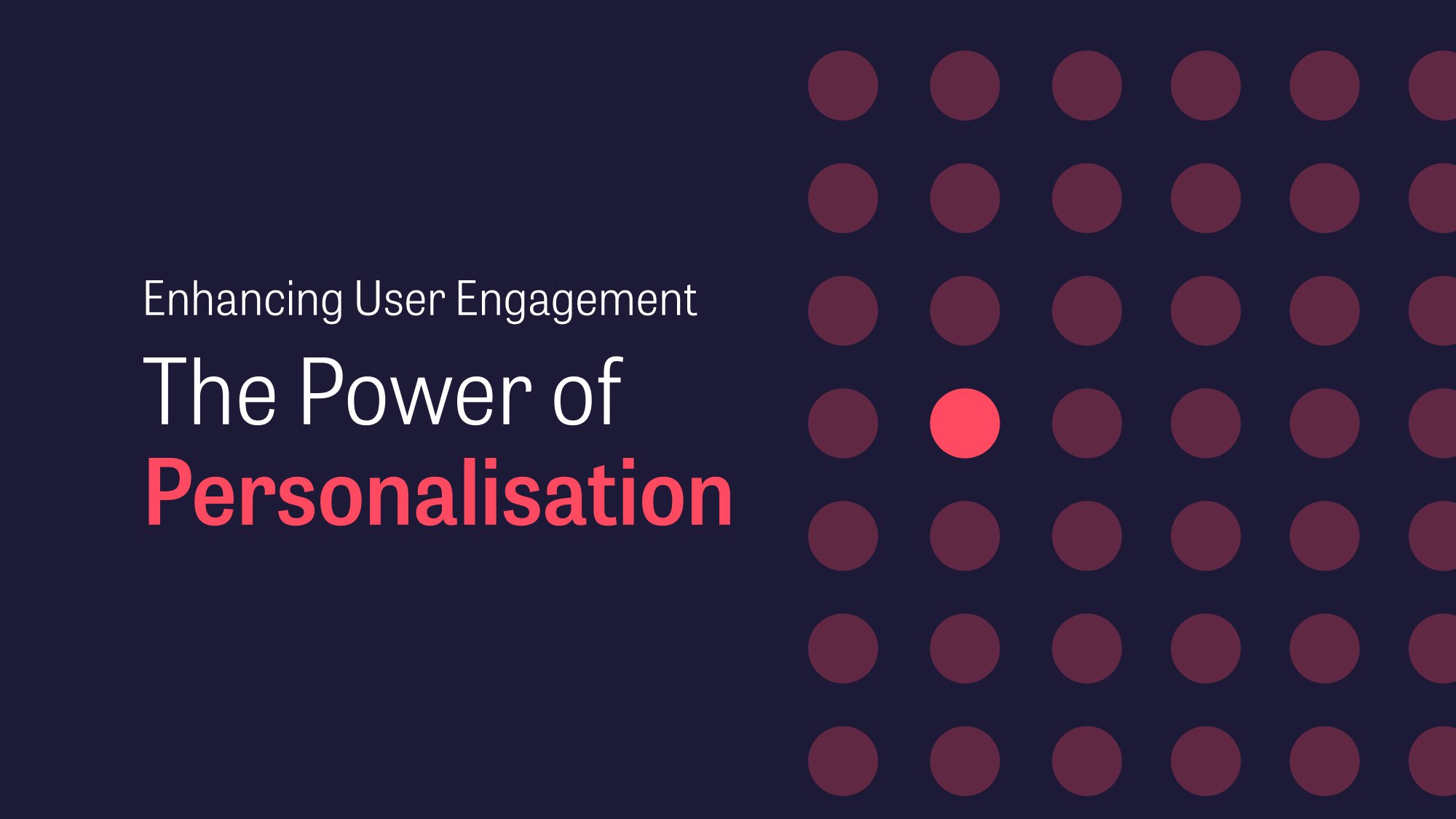
In the world of commerce, mobile apps have become indispensable tools. With a significant majority of internet users on mobile devices, they offer unparalleled convenience and functionality (e.g. AR and biometrics), personalisation, and serve as a favoured pastime for shoppers.
Having an app is great for business. But why? It is pretty simple actually. You’ll get more customers and sell more. If you look at the entire amount of sales, e-commerce is eating more and more of the share of sales than traditional brick and mortar stores. But why an app then and not just move the business to the traditional ecommerce platform – websites? Just like e-commerce is eating away at the physical sales, mobile is far superior to other devices in the digital channel mix with 80% of all internet users using mobile when they surf the web.

Mobile has higher loyalty and more purchases, and the items purchased are worth more. And on mobile, the user experience is far better in an app than a browser, due to personalisation, convenience, and functionality.

Let us look at a real-world example of the effects of introducing an app to the channel mix. Solar is the leading European sourcing and service company especially within electricity, plumbing and ventilation. Over 50% of their annual revenue goes through digital channels, and around 40% of that is through their app, Solar Mobile. This makes their app responsible for around 20% over their overall revenue, making the app invaluable for their overall business.
Why Choose an App? Elevate Customer Experience and Boost Loyalty
There are always aspects to consider when debating whether or not to invest in an app. Size of the business, target audience, and your overall digital strategy play an important role in the decision making. But you should also consider that mobile apps offer a far better user experience compared to a mobile browser. It is also safer, more stable, and offers offline capabilities, which is an important part of retaining customers and driving brand loyalty.
Other advantages include:
- Personalisation: Apps can leverage user data to offer personalised product recommendations, special offers, and tailored shopping experiences, increasing the likelihood of conversions and customer retention.
- Loyalty Programmes: Retail apps can easily integrate loyalty programmes, rewards, and customer engagement features, encouraging repeat business and brand loyalty.
- Push Notifications: Apps can offer live activities and send real-time notifications about promotions, discounts, and new arrivals, helping to drive sales and boost customer engagement. It is possible to send notifications on the web, however the effect is not the same and it is less common to do so.
- Mobile Payments: Apps can integrate various mobile payment options, including digital wallets and one-click payments, simplifying the checkout process and reducing cart abandonment rates.
- Data Collection: Apps can collect first party data, which makes it easier to personalise the shopping experience and help tailor your efforts to maximise profit.
Want dive deeper into the values of personalisation and successful push notification strategies? At Shape, we've created a comprehensive report with data from one of Denmark's largest studies on app usage. Get access below 👇
The Three Pillars of E-Commerce Success: Convenience, Personalisation, and Pastime
So, why are mobile apps winning over other ecommerce experiences?
This can be divided into three aspects:
1. Convenience:
Your phone is your personal device. Most people do not share phones unlike other devices such as tablets or computers. Purchasing anything through the phone is both quicker and more convenient, since you often have your phone right at hand. Furthermore, if you utilise an app, the authentication process is much faster than through other browser experiences, since you’ve already gone through the onboarding process and you can utilise features such as biometric authentication. Here you have disclosed your information, which makes the checkout process even faster. And if you have added Apple/Google Pay and/or MobilePay options, you can be done with a purchase in a matter of seconds.
When you purchase goods on apps you are also in a guided flow, which is harder to escape from than it would be in a browsing experience, which helps businesses retain the customer and make them finish a purchase.
2. Personalisation:
Inspiration is an immense part of the e-commerce experience. Brick and mortar stores have limitations when it comes to selection and stock, which is no issue for online stores that usually have almost too much to choose from. Here we talk about a phenomenon called endless isles, which can cause shopping paralysis. This is where inspiration comes in. We see that apps with inspiration universes have a much higher CTR than apps that do not. BUT, the inspiration has to be relevant or this will not be the case.
Personalisation is a way to achieve this. If you browse the web, it is harder to gather the right information to personalise the inspiration to your liking. However, on apps it’s possible to gather first party data and behaviour patterns that will help provide the best service for your customers. Mobile is a goldmine when it comes to data collection, which makes personalisation more accurate benefitting both customers and businesses.
3. Pastime:
Shopping releases dopamine – it makes you feel good. So, many of us use it as a pastime when we are bored or need to kill some time. And what device is closest to you? Most likely your phone. When you are riding on the train or casually watching tv on the sofa, many will grab their phone and start browsing. And since we have already established that apps create a far superior experience to a browser on the phone, this is a great way to reach your customers.
Engage, Invest, and Play: Secrets to Successful Loyalty Programmes in Retail
Retention is an important business objective. High retention means more sales – it is that simple. There are several strategies to increase retention rates, but especially within retail, loyalty programmes is one of them. Loyalty programmes also have the potential to increase customer engagement, increase customer spending, increase brand loyalty and advocacy, and can provide a competitive advantage in the retail industry. With more and more people now having the majority of their wallet on their phones, they will prefer to also have these loyalty programmes on their phones to save having a membership card laying around and that they never use.
Loyalty programmes can create demand, however, it does not just happen just because you have one. So, how do you get your customers to interact with your brand?
1. Give it at price
It may sound counterintuitive, but many actually prefer to pay for a loyalty programme. Well, they may prefer not to pay, but they will interact more with your brand if they have paid to be a part of it, because they are more invested.
2. Social interactions
Make it possible to socially interact with your brand and other members. Encourage referrals and sharing or other social interactions that will drive engagement from your members. This will also make them feel more invested in your brand and the programme.
3. Gamification
This aspect is no shocker. Implementing gamification will no doubt increase engagement. And if you provide great incentives to participate in the games, you will get even more onboard. It has to be fun, hard, and/or interesting and you will keep the users engaged.
These three aspects can help increase awareness about your brand, app, and loyalty programme. If you fail to raise awareness, your customers will forget about the programme and then the risk of unsubscriptions will increase.
Together, mobile apps and loyalty programmes provide valuable tools for businesses to succeed in a competitive retail environment. Embrace the benefits of convenience, personalisation, and engagement as you navigate the commerce landscape, and witness the positive impact on your business in this mobile-centric era.








